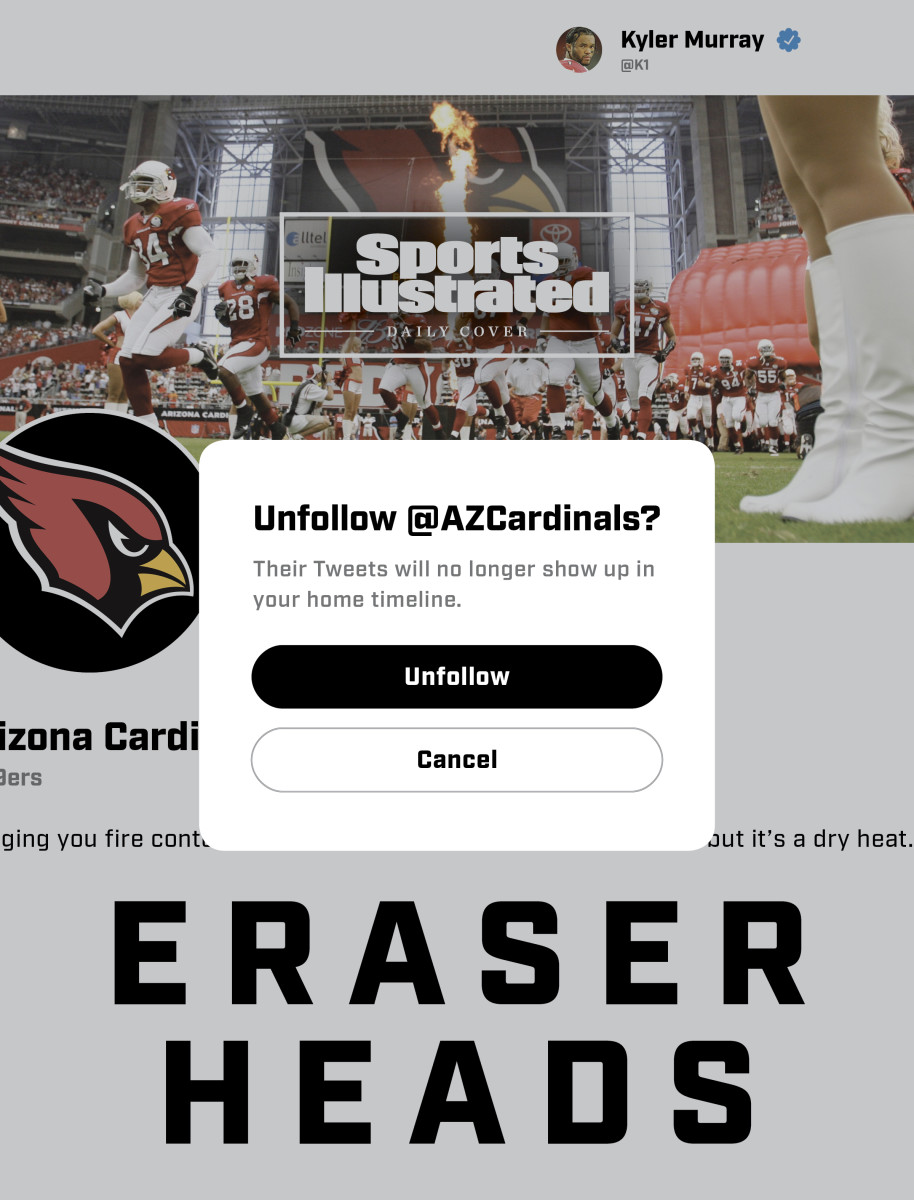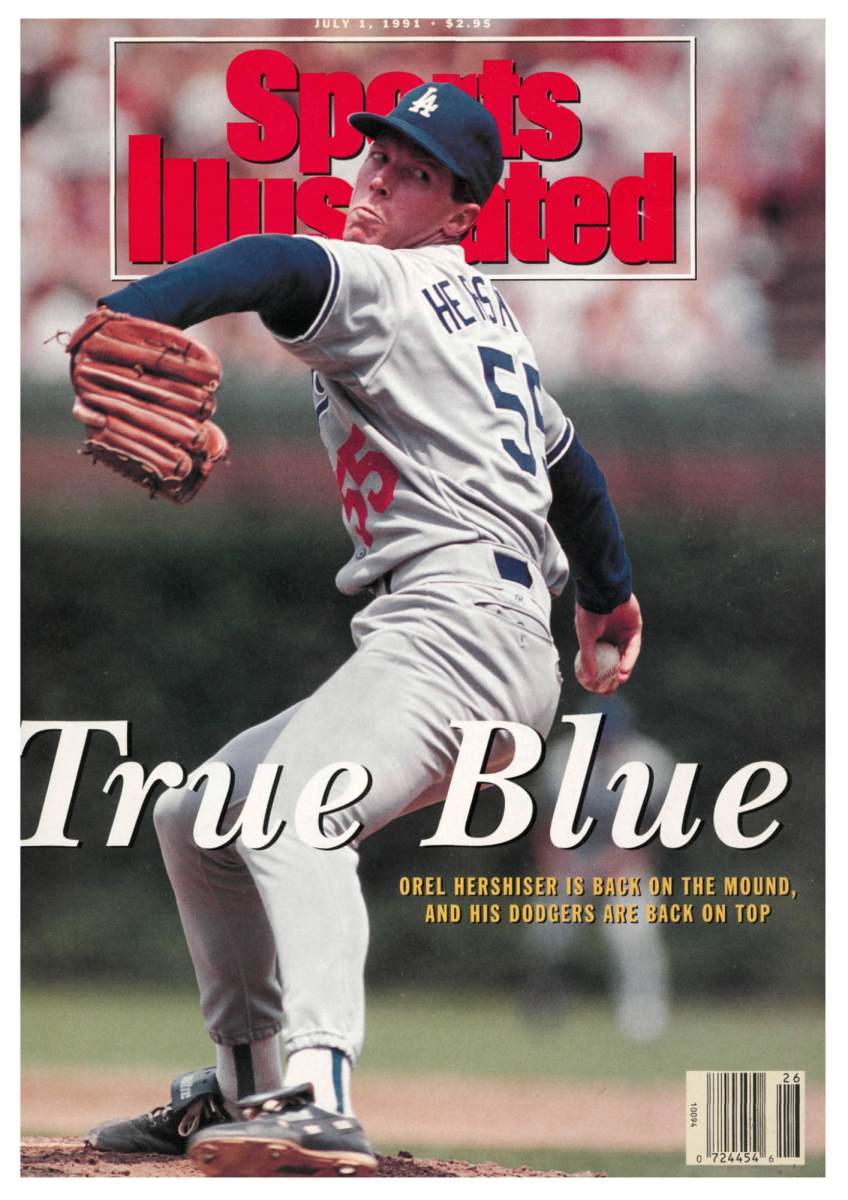SI:AM | NBA Free Agency: 5 KD Trades, Brunson’s New Team and More
Good morning, I’m Dan Gartland. My head is still spinning from a wild day of sports news but let’s try to make sense of it all. And, before we get into it, a programming note: We’ll be back in your inbox on Tuesday. Enjoy the holiday weekend.
In today’s SI:AM:
If you're reading this on SI.com, you can sign up to get this free newsletter in your inbox each weekday at SI.com/newsletters.
Just another day in the NBA
The Astros aren’t going anywhere
The NBA news cycle truly never stops. Just as everyone was preparing for the opening of free agency at 6 p.m. ET yesterday, news broke that Kevin Durant had requested a trade. It was the kind of earth-shattering news that seems to happen in the NBA every few months and it came down on what is already the busiest day of the league year, so let’s not waste any more time on the introduction and just get straight to breaking down everything that happened yesterday.
We’ll start with the Durant news. He would reportedly prefer to go to the Suns or the Heat but he’s in no position to dictate where the Nets send him. ESPN’s Adrian Wojnarowski reports, somewhat obviously, that “the Nets plan to move Durant where they can get the best possible deal.” Durant is 33 and has four years left on his contract, so it’s not like he can dangle the threat of refusing to sign an extension with his new team as a way of forcing Brooklyn to ship him somewhere specific. On top of that, he is owed $194,219,320 over the life of the contract—an average of $48.6 million per year—so any team trying to trade for him will have to be able to fit that contract under the salary cap.
Accommodating one big contract in a trade is tough, but what about two? Wojnarowski reported later that Durant and Kyrie Irving want to continue playing together, just not with the Nets. That sounds like wishful thinking on their part. How many teams are going to be able to clear the necessary cap space, offer the Nets a satisfactory return and want to invest in a duo of players on the wrong side of 30 who didn’t accomplish anything of note during their first run together?
Now, onto transactions that have already been completed. Five players—Bradley Beal, Nikola Jokić, Ja Morant, Karl-Anthony Towns and Devin Booker—have reportedly agreed to supermax extensions. Jokić’s deal, for five years and $264 million, is the biggest in NBA history.
The biggest contract handed out thus far to a player who is switching teams is Jalen Brunson’s four-year, $104 million deal with the Knicks. As Michael Pina writes, the Mavs could have locked up Brunson on a four-year deal worth $55 million before last season but declined to offer him an extension after he ended the season on a down note. Brunson’s impressive performance in the playoffs this year made him a hot target this summer, though. Pina called Brunson “a nice player who made a notable jump last season” but he doesn’t love the deal, especially with the price tag:
“Brunson is a 6'1" combo guard who can’t get to the free-throw line and doesn’t shoot threes off the bounce. As a team that just won 37 games and has no clear path to winning a playoff series, the Knicks spent the past week moving draft picks and clearing cap space to treat him—a 25-year-old who probably won’t ever make an All-Star team—as their top priority.”
Some other teams were able to get quality players on cheaper deals, my favorite of which is probably P.J. Tucker to the Sixers for three years and $33.2 million. Rohan Nadkarni likes the deal, too, giving Philadelphia a B+ for the signing. As Rohan points out, the added upside for the Sixers is that they got better while making a rival (the Heat) worse by prying away a key player.
The moves are just getting started and our NBA crew will be tracking all the moves all day long in this live blog. Some big names to watch: Zach Lavine and DeAndre Ayton. Be sure to keep that open on your phone and refresh it throughout the day as you pretend to work ahead of the long holiday weekend.
The best of Sports Illustrated

In today’s Daily Cover, Michael Rosenberg examines a uniquely 21st century sports negotiating tactic—the social media unfollow:
“If the last decade has taught us anything about pro sports, it’s that no matter how big your yacht is, you’re going to sit on the deck, look at your phone and stew about people you can’t stand anymore. In 2017, PSG stars Neymar and Edinson Cavani were supposedly feuding over who would take penalty kicks when Neymar unfollowed Cavani on Instagram. One of the first signs that Antonio Brown’s Raiders tenure was doomed was when he unfollowed quarterback Derek Carr on Instagram. On Dwight Howard’s way from the Lakers to the Rockets in ’13, Kobe Bryant unfollowed him on Twitter.”
Our NBA experts all tried to make sense of the Durant trade request. … Rohan Nadkarni and Michael Pina put together five potential trade packages for Durant. … The other big news of the day was the shocker that USC and UCLA are jumping to the Big Ten, which Pat Forde breaks down here.
Around the sports world
Gabriel Landeskog’s neighbor got quite the shock when the Stanley Cup was accidentally delivered to his house instead of the Avalanche captain’s. … Tamara Korpatsch, who criticized her doubles partner, Harmony Tan, for dropping out of Wimbledon on short notice, said the two have cleared the air. … Padres pitcher Mike Clevinger took issue with some comments Diamondbacks broadcaster Bob Brenly made about him during a recent game. … Former UFC champion Cain Velasquez, who is charged with attempting to kill a man who he alleges molested his son, is now suing the man.
The top five...
… things I saw yesterday:
5. The aerial view of the baseball field at a bible college in California
4. Michael Perez’s three-homer night for the Pirates, making Pittsburgh the only team in MLB history to have three players record three-homer games in the same month
3. Avalanche defenseman Kurtis MacDermid taking a tumble with the Stanley Cup
2. Mariners pitcher Logan Gilbert snagging a 106.4 mph line drive
1. Erica Wheeler’s buzzer beater for the Dream to force overtime against the Liberty
SIQ
On this day in 1974, NFL players began a six-week strike over what they called “freedom issues.” Chief among their concerns was the so-called “Rozelle Rule,” which permitted the commissioner to do what?
Yesterday’s SIQ: On June 30, 1992, an NHL arbitrator issued his ruling after the Quebec Nordiques struck nearly simultaneous trades to send Eric Lindros to which two teams?
Answer: the Flyers and Rangers. Lindros was the clear top player available in the 1991 draft and the Nordiques tanked the ’90–91 season in hopes of landing him. Lindros made it clear that he would never play for Quebec but the team still selected the 6'5", 230-pound teen with the No. 1 pick and he returned to the Ontario Hockey League for the following season.
By the summer of 1992, Lindros had not warmed at all to the prospect of playing for the Nordiques and owner Marcel Aubut decided to relent and trade him. On June 19, the night before the draft, Aubut had seven teams bidding against each other to land Lindros. Negotiations inside the Radisson Hotel in Montreal stretched long into the night. On the morning of June 20, the Flyers thought they had a deal with the Nordiques. Just over an hour later, the Rangers were told their offer had been accepted. E.M. Swift laid out the whole confusing saga in the July 13 issue of Sports Illustrated.
The broad strokes are as follows: Aubut went to the hotel suite of Flyers president Jay Snider at 1 a.m. with a wishlist of players and picks and a demand for $15 million cash. At the same time, Rangers GM Neil Smith and Nordiques GM Pierre Pagé were also negotiating a deal. They had agreed on the players and picks to be involved but needed Aubut and the COO of the company that owned the Rangers to talk over the cash considerations. Smith and Pagé wrapped up their negotiations around 5 a.m. but before Aubut and his Rangers counterpart could talk dollars and cents, Snider called Aubut and said he was accepting the deal that he’d been presented with. Snider asked Aubut to get him Lindros’s phone number so that he could make sure that Lindros was amenable to playing in Philadelphia and, after the phone call with Lindros went well, assumed the trade would move forward. Aubut, though, hoped to use the agreement with the Flyers to squeeze more out of the Rangers, as Swift wrote:
“But Aubut wasn't through bartering. Described in [arbitrator Larry] Bertuzzi’s subsequent report as ‘constantly hurried and agitated,’ Aubut continued to negotiate with the Rangers. And he could now use the Philadelphia deal as a hammer. At 11:50 Aubut got [Rangers executive Stanley] Jaffe to agree to fork over $20 million in cash along with the players and draft choices on which Smith and Pagé had settled. Aubut told the Rangers the deal was theirs. Then he went to see Snider in the Flyers’ suite, where Aubut claimed that the Quebec board of directors had told him to take New York’s offer. ‘We had a deal!’ Snider raged.”
Nine days later, Bertuzzi ruled that the Nordiques must honor the original deal struck with the Flyers, concluding that Aubut’s decision to pass Lindros’s phone number along to Snider signaled that the deal was done.
It was a mess of epic proportions. Swift wrote that “even by the dismal standards of the NHL, this was a tawdry show,” and that Aubut “lost virtually all of his credibility.” It wasn’t long before the franchise was sold and shipped to Colorado.
Sports Illustrated Partners With Muhammad Ali Enterprises on NFTs
Sports Illustrated and OneOf have announced the latest in their ongoing SI Covers NFT program. These NFTs pay homage to Muhammad Ali’s 40th Sports Illustrated cover through a series of designs featuring 3D-animated versions of Muhammad Ali action figures. They’re available for purchase here.
From the Vault: July 1, 1991

Everything was going great for the Dodgers three months into the 1991 season, as Nicholas Dawidoff wrote:
“Last week as summer came to Los Angeles, Tommy Lasorda’s city was its usual crowded self. It was bumper to bumper on the Santa Monica Freeway, side by side on the Malibu beaches, cheek to cheek at the Mayan club. Unless you count the thoroughly separated Kiefer [Sutherland] and Julia [Roberts], about the only people between Beverly Hills and Chavez Ravine who’d found any breathing room worth mentioning were Lasorda and his Dodgers, who by taking three of four from the Pittsburgh Pirates, opened a six-game lead over the Cincinnati Reds, L.A.’s closest pursuers in the National League West. As of Sunday, the Dodgers had surged to baseball's best record, and they’d made their mark on this up-to-the-minute town by emphasizing down-to-earth virtues: tough pitching, stingy defense and good pasta.”
By the end of the season, though, the only thing worth talking about was Lasorda’s pasta recipe.
When Dawidoff’s article went to press, the Dodgers were 42–26, buoyed by the unexpectedly early return of ace pitcher Orel Hershiser from shoulder surgery. Joined by Ramon Martinez, Bob Ojeda, Mike Morgan and Tim Belcher, the Dodgers sported one of the best rotations in baseball. It was a hallmark of their success.
“When I joined the club in Brooklyn, it was an offensive club,” former Dodgers pitcher Don Drysdale, then a broadcaster with the team, told Dawidoff. “But since we’ve come out here, the Dodgers have practically coined the phrase ‘winning with pitching, speed and defense.’ There’s a tradition of excellent pitching in Los Angeles, no question, and the Dodgers have probably put a bigger emphasis on pitching than other organizations have. If you can pitch, you can win. We’ve proven that.”
Though the pitching was good all season, the Dodgers couldn’t keep up their winning ways as the summer dragged on. They went 26–29 in July and August, during which time they dropped to second place behind the Braves in the NL West. And although a 20–8 September had Los Angeles atop the division by one game entering the final week of the season, the Dodgers lost three of their last four games and wound up missing the playoffs in those pre-wild card days.
Check out more of SI’s archives and historic images at vault.si.com.
Sports Illustrated may receive compensation for some links to products and services on this website.
